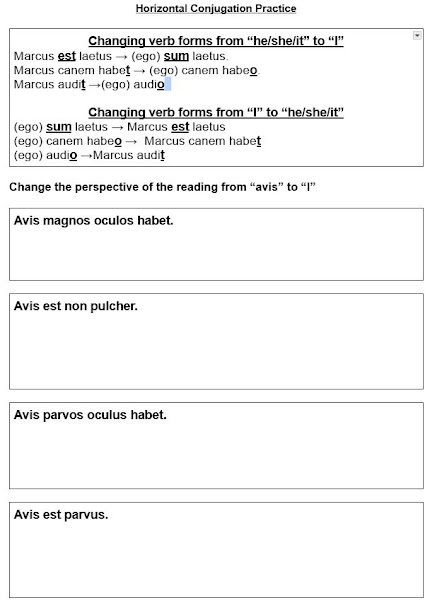As I told you in an earlier blog post, I have been voraciously listening to (and re-listening to) Emily Hanford's podcast series "Sold a Story," a documentary about the shortcomings of the whole language/three-cueing approach to teaching students to read and why the science of reading matters. One of her earlier audio documentaries on the topic was "What the Words Say," and in it, Hanford discusses a reading hypothesis proposed by Wesley Hoover and Philip Gough in their article, "The Simple View of Reading" (1986). Hanford also interviews Hoover to discuss this further. Allow me this excursus to summarize this hypothesis (which has been verified in over 150 studies) - I promise that it will lead to a bigger application of what we do in our world language classrooms:
Hoover and Gough's Hypothesis
According to Hoover and Gough, learning to speak is a natural process for humans (unlike reading which is not), so by the time students begin school, they already possess a huge knowledge of spoken language in their L1. Gough writes:
“The average American 6-year-old has a mastery of English [that] would be the envy of any college graduate learning English as a second language.”
However, while these beginning students probably understand the majority of what is spoken to them, they cannot yet read those words which they already they know how to say. Hence, they must be taught those skills. In the podcast, Hoover states,
"What happens when [students] come to school, their language comprehension is fairly high, and what they have to do is learn word recognition, and so if they're taught word recognition, they can read to the level at which they can comprehend language."
As a result, whenever we read, Gough and Hoover believed that two processes happen simultaneously in our brains for reading comprehension to occur:
- Word Recognition - the actual process of reading the individual words accurately. This happens through decoding, phonics, familiar word recognition, and sight words.
- Language Comprehension - knowing what each individual word means (either through spoken, listening, or read). Essentially, this happens through the possession of background knowledge of vocabulary, inferring from context, and grammar.
If one can do both of those processes when reading, then reading comprehension occurs. But if one lacks one (or both) of these processes when encountering a word, then comprehension cannot take place. For example, Marty is reading a sentence. A number of things can happen:
- Marty reads the words and possesses the language comprehension of these words. Successful reading comprehension has taken place.
- Marty cannot read the words. Language comprehension cannot occur; therefore, reading comprehension is not successful.
- Marty reads the words but does not possess the necessary language comprehension of them. Successful reading comprehension cannot fully occur. From here, Marty can infer meaning from the context of the sentence; however, this does not guarantee 100% correct overall comprehension.
- Marty cannot read the words nor possesses the necessary language comprehension even if he could have read them. Successful reading comprehension cannot occur.
Hoover explains,
“Word recognition is complex. Language comprehension is complex. But the big idea of reading is that if you can master those two complex skills, then you can master reading comprehension.”
(NOTE - as we know, poverty can greatly affect incoming students' language comprehension and background knowledge of possessed vocabulary. This is known as "word gap" - those children from lower socioeconomic families are exposed to fewer words earlier in life those from more privileged backgrounds).
So what does all of this mean in our world language CI/ADI classrooms?
Application to the CI/ADI Classroom
We know that Krashen is a huge advocate of reading:
"Our reading ability, our ability to write in an acceptable writing style, our spelling ability, vocabulary knowledge, and our ability to handle complex syntax is the result of reading."
"The ability to speak is the result of listening [and] the result of reading."
When students arrive in our classrooms in level 1, most likely they posses absolutely LITTLE to NO language comprehension of our L2 language. So on day 1, if we were to give students something to read in L2, students might be able to read/decode the words, but those words would have absolutely no meaning if there was not any L2 language comprehension involved.
Hence, there is a great need for us as teachers to deliver comprehensible input to our students for them to acquire words to build up their L2 language comprehension. The traditional "introduce words on Monday, vocab quiz on Friday" does not build up true L2 language comprehension - that is considered conscious/active learning (see Eric Richards' blog post on the difference between language learning and language acquisition - it is GOLD!) and does not lead to acquisition; there is no true retention occurring (I call this the "cram and flush syndrome" - students cram for a quiz, take it and get an A, and then flush it from their minds).
When our students build up their language comprehension and then we introduce reading to them based on that, then the language acquisition process can continue. If we have students read material for which they do not possess the necessary language comprehension, then essentially we have set our students up for failure, because they are unable to understand and process what they are reading. However, this is based on the assumption that our students can engage in word recognition first.
Regardless of what side you are on in the Reading Wars, there are some truths about teaching students to read which can be applied to our CI/ADI classrooms.



